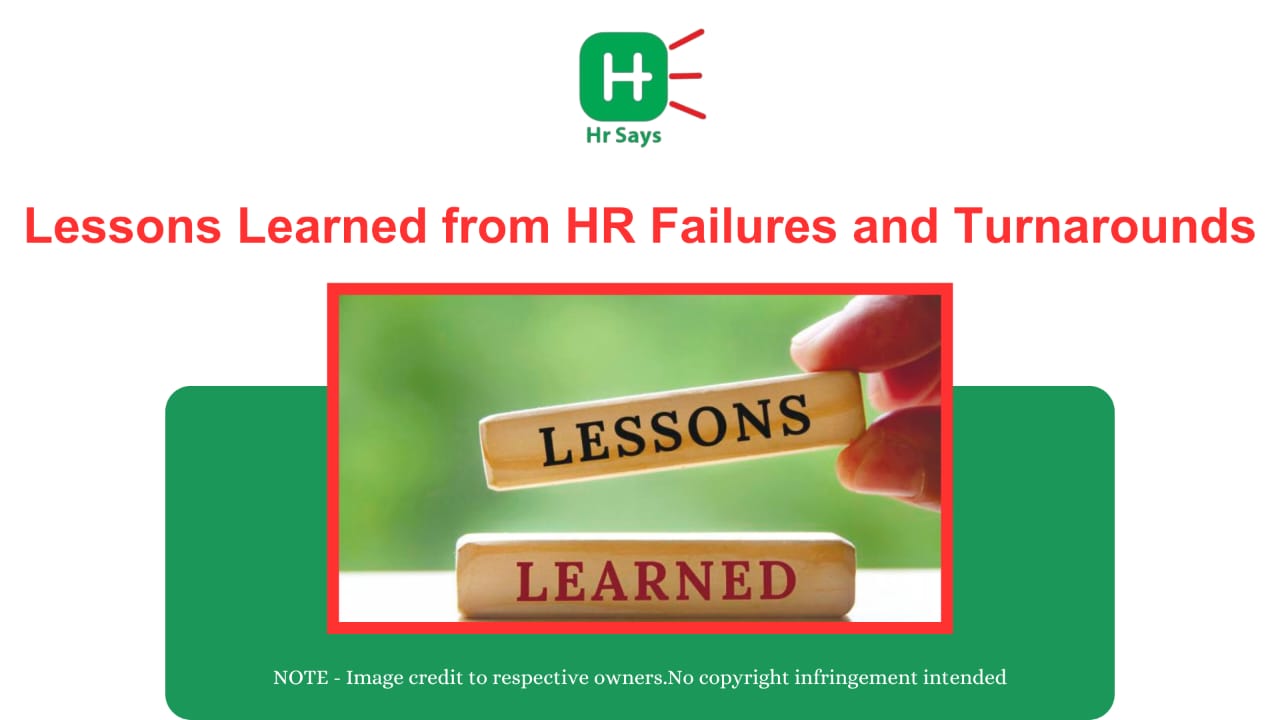What determines the failure and improvement in some HR plans? There are occasions when people rules fail in every company. However, the real victory is in the way we perceive those faults and correct them and learn.
Understanding the Root of HR Failures
HR systems do not break out of the blue. You see warning signs first. These may include poor engagement of employees, lack of a clear communication, or poor leadership. These small issues gradually develop into huge gaps within the organization.
Common reasons behind HR breakdowns include:
● Ignoring workforce diversity and inclusion
● Neglecting employee feedback and engagement surveys
● Overlooking training and talent development
● Weak performance management and unclear role expectations
● Failure to align HR strategy with business goals
Each of these elements plays a crucial role in maintaining a strong organizational culture. When ignored, they lead to low morale, high attrition, and poor productivity.
How Turnarounds Begin
Recovery often starts with acknowledgment. When HR leaders admit there’s a problem, solutions follow. The shift usually begins with assessing current practices and identifying blind spots in workforce management.
Successful HR turnarounds often include:
● Introducing transparent communication channels
● Strengthening leadership training programs
● Redefining performance evaluation methods
● Prioritizing mental health and employee well-being
● Building trust through consistent policies
An HR transformation doesn’t happen by rewriting policies alone. It requires empathy, collaboration, and alignment with the organization’s long-term vision.
Building a People-First Culture
A turnaround succeeds when employees start believing in the system again. A people-first culture is the heart of effective HR management. It values trust, recognition, and inclusion. When employees feel heard, they become active contributors to growth.
Creating a sustainable culture means focusing on:
● Open dialogue between management and staff
● Reward systems that appreciate both effort and outcome
● Regular skill development and reskilling programs
● Inclusion of feedback in decision-making processes
When such initiatives take root, they rebuild organizational trust and restore confidence in leadership.
Lessons for the Future
Every HR failure teaches something. The most valuable lessons often come from moments of discomfort. Organizations that learn to adapt and evolve after a setback are the ones that survive market uncertainties.
Key takeaways for HR leaders include:
● Never underestimate employee voice
● Keep HR policies flexible and human-centered
● Monitor engagement metrics regularly
● Maintain transparency even during difficult transitions
● Remember: culture recovery takes time, but consistency rebuilds trust
Conclusion
Human resources isn’t just about managing people. It’s about nurturing relationships that drive business outcomes. Failures are inevitable, but learning from them defines the strength of an HR team. Turnarounds happen when empathy meets strategy, and growth replaces blame.

 This article explores how organizations can learn from HR failures and rebuild stronger through
empathy, transparency, and employee-centric practices. It highlights practical lessons,
strategies, and cultural insights that drive long-term organizational resilience.
This article explores how organizations can learn from HR failures and rebuild stronger through
empathy, transparency, and employee-centric practices. It highlights practical lessons,
strategies, and cultural insights that drive long-term organizational resilience.












.jpeg)












.jpeg)